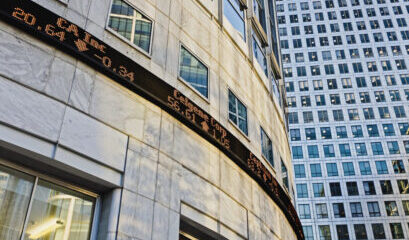Signature Bank securities vault higher despite questions on recovery
Heavy trading in debt and equity issued by failed lender Signature Bank continued this week after a series of asset sales by the Federal Deposit Insurance Corporation (FDIC) boosted investors’ hopes for recovery on the bonds, said two sellside analysts.
The bank’s preferred and common shares jumped Thursday, while the subordinated notes held steady following enormous gains in December.
However, the outcome of the FDIC’s receivership of Signature Bridge Bank—the successor to Signature Bank—is far from certain and could take years to play out, said one of the analysts and a legal advisor.
“It’s a binary situation and it’s unlikely the value will break in the middle,” said the first analyst. “Right now, people think they will get paid at par, but there is a question of when will you get paid,” he continued.
The FDIC pays out claims in an order set by statute: administrative expenses, deposit liability, general or senior liability of the institution, obligations subordinated to depositors or general creditors and obligations to shareholders. Unlike other claimants, subordinated debt holders and stockholders are not required to file a claim with the FDIC, according to an FDIC spokesperson.
Potentially limiting the payout for investors, fees racked up by the FDIC and external advisors administering a receivership can be substantial in a lengthy case, said the legal advisor.
New York bank regulators closed Signature in March 2023 in the wake of the failure of Silicon Valley Bank and appointed the FDIC as receiver. Instead of immediately selling the bank, the FDIC formed a bridge bank with Signature’s assets and liabilities and a day later sold all of the deposits and some loan portfolios to a New York Community Bancorp subsidiary. The buyer did not assume Signature’s USD 575m in subordinated notes.
Signature, unlike most banking institutions, operated without a bank holding company, leaving the bank’s subordinated notes, preferred shares and common shares to be dealt with in the FDIC receivership process instead of a traditional Chapter 11 bankruptcy.
The FDIC’s receivership balance sheet for Signature Bridge Bank shows that as of 30 September, the bank had USD 60.8bn in assets in liquidation, cash and funds due from the FDIC Corp and USD 60.36bn in liabilities, leaving a positive USD 445m positive net worth. The report lists as zero the claims balance for subordinated debt holders.
Last month, the FDIC completed the last part of a three-pronged asset sale of a USD 33bn commercial real estate (CRE) portfolio it retained in receivership.
Since the FDIC started announcing the asset sales, the subordinated notes have surged in price and volume. Signature’s USD 375m 4% subordinated notes due 2030 and USD 200m 4.125% subordinated notes due 2029 both traded at 39 today, up from USD 0.250 on 17 November, according to MarketAxess.
Signature stock has jumped from near zero in November to USD 1.90 in mid-day trading on Thursday in the OTC market, while the preferred shares trade at 4.42 compared to less than 0.10 in early December.
“The market has a view that the FDIC has retained the majority of the equity in these joint ventures and the loan portfolios will generate cash to pay the FDIC and then they have the statutory waterfall obligation to pay the bonds and the preferreds,” said the first analyst.
Some market participants point out that it could take years for bondholders to get paid out and investors are calculating their IRR based on a longer-dated wind down. “It’s a zero-coupon bond and you can get a decent IRR if you are willing to wait,” concluded the second analyst.
The FDIC started the marketing process in September for the loan portfolios and since then it sold a 20% equity interest in USD 16.8bn of Signature loans collateralized by office, retail and market–rate multifamily properties to an entity controlled by Blackstone for USD 1.2bn.
In another transaction, Santander Bank paid USD 1.1bn for a 20% stake interest in USD 9bn of Signature loans securing rent-stabilized or rent-controlled properties. In a third transaction, the FDIC sold a 5% equity interest in USD 5.8bn of loans collateralized by rent-stabilized or rent-controlled multifamily properties to the Community Preservation Corporation.












